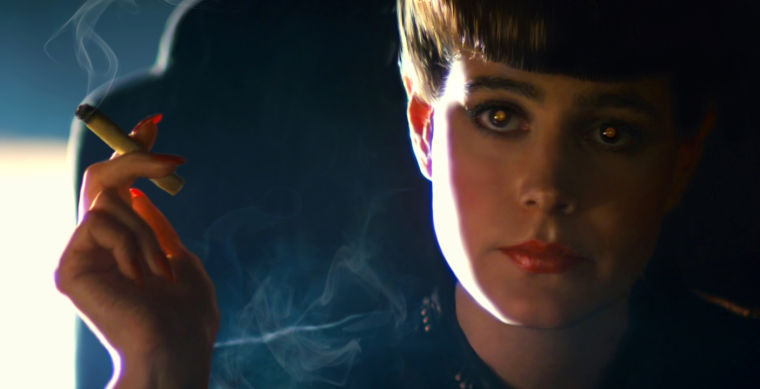
“In total, seven different versions of Blade Runner exist, all assembled in the 2007 special edition release.” — Warren Zhang
The year 2013 reintroduced the notion of a director’s cut to pop culture when a number of clashes between directors and distributors made headlines. Wong Kar-wai’s The Grandmaster was released in the United States in condensed form, while Lars von Trier agreed to release a shortened version of his art-porn epic Nymphomaniac: Volume I.
Even mainstream movies saw conflict in the cutting room, as Martin Scorsese had to cut down The Wolf of Wall Street to receive an “R” rating, Darren Aronofsky clashed with executives over the final cut of his forthcoming Noah, and the director of sci-fi siege flick Snowpiercer fought vehemently to release his director’s cut over a more action-y edit in the United States.
However, tussles between directors, producers and distributors have happened since the beginning of cinema, with several legendary stories about unreleased or after-the-fact director’s cuts emerging over the years. In particular, here are three of the most legendary director’s cuts of recent decades:
Blade Runner
Director Ridley Scott’s Blade Runner is a classic tale of unfortunate studio intervention — only with a happier ending than most. Initially, negative feedback from a test screening led the distributors to radically alter Blade Runner into something more palatable by adding a voice-over, changing the ending and stripping out any indication that (spoiler) the main character might have been a replicant.
Reactions, both reviews and box office, were muted at the time, but Blade Runner earned a hardcore following in the years since, with frequent revival screenings after its initial lackluster theatrical run.
Eventually, the early test screening cut was found and screened to sold-out showings, prompting Warner Brothers to commission an official director’s cut from Scott. Creatively dubbed, “The Director’s Cut,” this version of Blade Runner reintroduced the ambiguity and violence not found in the original release — this time without Harrison Ford’s voice-over.
Though this edit was received enthusiastically, Scott lacked the time and the resources to make all of his desired changes. Thus, in the mid-2000s, Scott revisited his seminal sci-fi noir again, resulting in “The Final Cut,” a comprehensive, definitive director’s cut of Blade Runner.
In total, seven different versions of Blade Runner exist, all assembled in the 2007 special edition release.
Heaven’s Gate
Perhaps the most infamous bomb in all of cinema history, Heaven’s Gate suffered not only the indignity of across-the-board critical pans but also of being released in severely butchered form. The premiere cut — running more than three-and-a-half hours — was so cataclysmically received that United Artists released to theaters an immensely pared down two-and-a-half-hour cut that promptly fell off the face of the earth.
Two years after Heaven’s Gate’s disastrous premiere, the Z Channel, a now defunct eccentric cousin to HBO, aired the original 219-minute cut to a positive reception. MGM, which had purchased United Artists’ films after Heaven’s Gate bankrupted the studio, marketed this version as a director’s cut and released it on home video.
However, writer/director Michael Cimino never considered this the definitive vision of the film, citing a rushed post-production schedule as to why his true vision was never realized.
MGM tried to work on a director’s cut of the film in 2005, but Cimino vehemently refused to revisit his work. However, he eventually relented and, in 2012, finished his director’s cut of Heaven’s Gate, running at 216 minutes. Though the final version is no masterpiece by any stretch, it does provide a good deal of closure to one of the most tumultuous productions in Hollywood history.
The Thin Red Line
After disappearing for 20 years, director Terrence Malick came back to Hollywood with The Thin Red Line, a film that almost instantly gained notoriety not for what’s in it but for what’s not.
There are numerous conflicting reports as to whether a longer cut of the film exists. One of the editors onfthe film insisted a rumored five-hour cut was merely a rough assembly of all the footage shot, while others contend Malick preferred a substantially longer edit.
Malick is no stranger to extended cuts of his films — there are three different edits of The New World in circulation, and Malick allegedly is prepping a mind-boggling six-hour cut of The Tree of Life — but The Thin Red Line remains his most infamous because of the sheer number of performances left on the cutting-room floor.
Almost every male actor then working in Hollywood was rumored to have been involved in the film in one way or another. We do know for a fact that George Clooney’s performance was severely truncated, along with Adrien Brody’s turn (which was originally supposed to be the film’s main focus). Whether any of this material ever sees the light of day is anyone’s guess, given how enigmatic and secretive Malick is.



